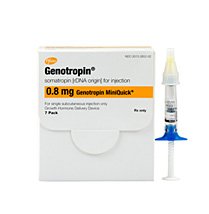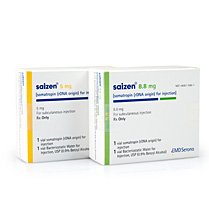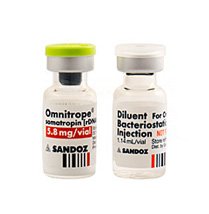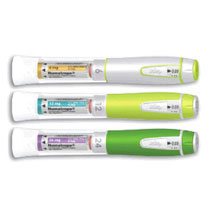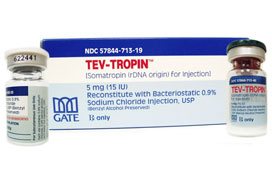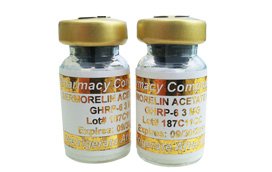The Blood Test For Checking For Low Testosterone Levels

The blood test for checking for low testosterone (low T) levels measures the amount of testosterone in the body’s bloodstream. It is able to tell whether levels are in normal range or whether they are too high or too low.
This hormone is created in the testes in men and in the ovaries in women. It is also produced in small amounts in the adrenal glands in both sexes.
There are two (2) kinds of testosterone in the blood: Total and free.
- Total testosterone:
Total testosterone makes up approximately 2/3 of the hormone that is circulating in the blood stream. It is bound to proteins in the blood called sex hormone binding globulin (SHBG).
- Free testosterone:
Testosterone is in the blood stream that is not attached to SHBG or to any other proteins. Approximately one to four percent of this hormone in the body is free and it is not bound to any proteins at all; hence, why it is called “free.”
In most cases, getting an accurate read of the amount of total testosterone in the blood will provide the prescribing doctor with enough adequate information on testosterone levels. Only in some cases will it be imperative to also test for the amount of free (or unbound) testosterone.
The testosterone blood test is the same for both kinds of the hormone, but since the amount of free testosterone is so low, usually only the numbers for total testosterone will be taken into account when discovering if a patient has low T or not.
The only time that a low testosterone blood test will be important to measure free or what is also called bioavailable testosterone is when a more accurate sampling needs to be gathered for more accuracy in determining if a troublesome medical condition is present. Otherwise, total testosterone is what doctors look at when making a diagnosis.
How To Test For Low Testosterone
The blood test for testosterone levels is very simple. It involves the kind of blood sampling that a person would receive at a normal routine visit to their primary care physician. Nothing is special or different about it. The only difference is what is being tested in the blood. In this case it will be testosterone hormone levels.
How to prepare for testing
There is no special preparation for this kind blood test for low testosterone. No fasting is necessary as it will be when testing for other certain things in the blood. Testing is usually done in the morning hours when levels are at their highest.
The steps for the testosterone blood test are as follows:
- A thick rubber band will be place around the patient’s upper arm to stop the blood flow and to engorge the vein in the arm joint with blood
- The practitioner will then use an alcohol gauze pad to clean the test site on the inside of the elbow
- A sterile needle will then be placed into the vein and blood will be removed into a sterile tube
- When enough blood is taken, the needle will be removed and pressure will be applied to the testing area, often with a gauze pad or a cotton ball
- A bandage will be placed on the test site
That is all that is involved in the blood test for testosterone levels. Along with this test, the patient will be required to undergo a physical examination and to share their medical history and any current medical conditions that they are experiencing.
The doctors at Greenberg Health will need all of this information in order to make the most educated diagnosis and to create the best treatment plan for the patient. The prescription the physician writes will also be based upon all of this data.
What do test results mean?
If blood test testosterone levels are shown to be low when a doctor is reading the results after they receive them from the local clinic where the patient is sent, this could mean that low T is the cause of the terrible symptoms that a person is experiencing. This is when that client could benefit from testosterone replacement therapy (TRT) for their low T condition.
These kinds of results can tell why a person is feeling ailments or issues with their physical, mental, emotional and sexual health.
Here are some of the symptoms that could mean a person has low T:
| Depression | Getting sick with the cold or the flu easily |
| Low energy | Difficulty with healing (wounds or injuries) |
| Erectile dysfunction | Forgetfulness |
| Low bone density | Loss of memory |
| No stamina | Lack of ability to focus or to concentrate |
| No endurance | A foggy feeling |
| Weight gain | Anxiety |
| Loss of muscle mass | Irritability |
| Erectile dysfunction | Anger |
| No sexual libido | An over feeling of emotional instability |
| Lack of sexual desire | High cholesterol levels |
| Hot flashes | High triglyceride levels |
| Night sweats | Risk for heart disease and stroke |
| Weak skin elasticity | Diabetes |
| Facial wrinkles and crow’s feet | Osteoporosis |
| Sagging skin | Shrinking organs |
| Balding | Poor sleeping patterns |
| Thinning hair | Slower metabolism |
| Nails that do not grow | A weak immunity |
Testosterone blood test results can tell a lot to a physician who is familiar with all the symptoms caused by low T. These doctors are called endocrinologists and they specialize in the hormones of the body.
When you get a blood test at “Greenberg Health,” you are also getting a whole lot more than just the testing. Patient will receive:
- Trained and licensed physicians with years of experience testing, diagnosing and prescribing the correct medications for their patients
- Skilled, understanding and compassionate clinical advisors who will spend as much time as needed with a client over the phone giving technical and moral support while the patient is undergoing TRT
- The best, top quality medications on the market
- Full medical supervision throughout the entire therapy protocol
- An education on increasing testosterone naturally (healthy lifestyle habits)
The cost for testosterone replacement therapy does not just include the price for the medications. It also includes all the best professionals and everything from day one to the last day of therapy that a person needs to gain the best benefits.

















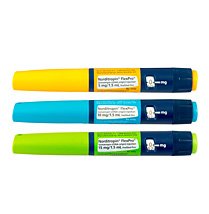
 Norditropin
Norditropin